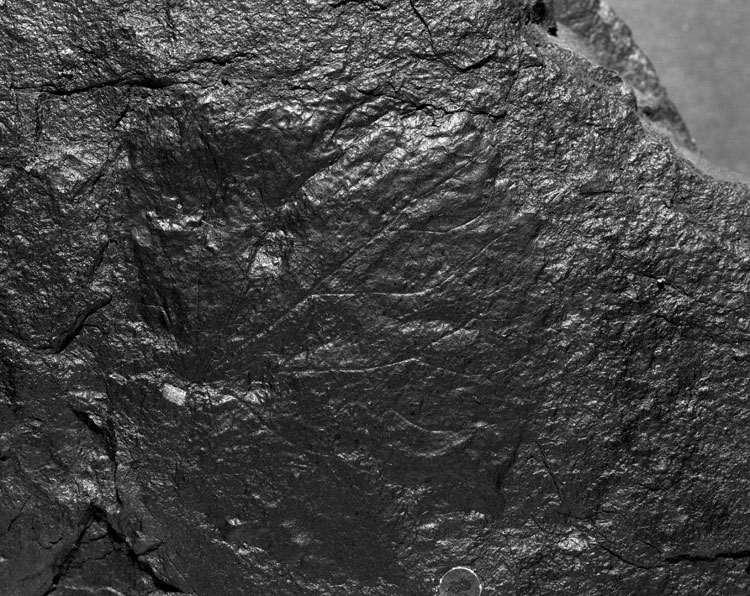Locality
USGS11475
69.716° -143.408°
Demarcation Point
Plant fossils were collected from a iron-rich (sideritic) indurated layer within a gray clay on the east bank of the tributary of the Jago River. This locality is equivalent to Detterman 300P.
Description
Leaf: simple; symmetrical (?); very wide ovate; apex obtuse; base lobate (cordate ?); margin serrate-crenate, teeth with rounded acute apices, rounded sinuses and convex sides, axis of tooth inclined towards leaf apex; primary midvein moderate, more or less straight, tending to become sinuous near the apex; a-pectinals diverging from the midvein at the leaf base at angles of 25-30°, initially straight becoming curved, branched admedially near margin, the admedial branch arching to join the superadjacent superior secondary; a-abmedial veins curved terminating in the medial vein of the teeth; b-pectinals curved, sometimes recurved initially; b-abmedials curved departing at 40-60°; superior secondary veins departing the midvein at angles of approximately 45°, initially straight becoming curved, branching to join the superadjacent secondary, usually at an acute angle; tertiaries transverse percurrent, mostly convex, weak.
Remarks
This poorly preserved specimen can best be compared to 'Tilia' grewioides (Hollick, 1936, p. 144-145; Plate 1, Figs. 4, 5). In his description Hollick noted that the number of pairs of pectinal veins could be two or three. The poor state of preservation has obscured many important venation details and it may be that this specimen has two pairs of weak pectinals basal to the a-pectinals. Hollick also admitted difficulty in defining the differences between this species and 'Grewia' alaskana Hollick (reportedly occurring in the uppermost Cretaceous) and 'G.' crenata (Unger) Heer, a Tertiary species. Both shape and margin characters are highly variable in these leaves and it is chiefly upon these features that Hollick distinguishes his species. Until this confusion can be satisfactorily resolved this specimen should be assigned to the form that it is closest to, namely 'G.' orbiculata Hollick.
It is clearly not referrable to the genus 'Grewia' Linnaeus because unlike 'Grewia' the pectinals and secondaries are craspedodromous and not camptodromous. In this respect its form is closer to Pterospermites. Hollick's assignment to the extant genus Tilia (Tournefort) Linnaeus is unwarranted as it is based on a superficial likeness to 'Tilia' distans Nathorst from the Tertiary of Japan. Hollick's specimen was collected from the Kootznahoo Inlet, Admiralty Island, South-eastern Alaska and is assumed to be of Paleocene age.
